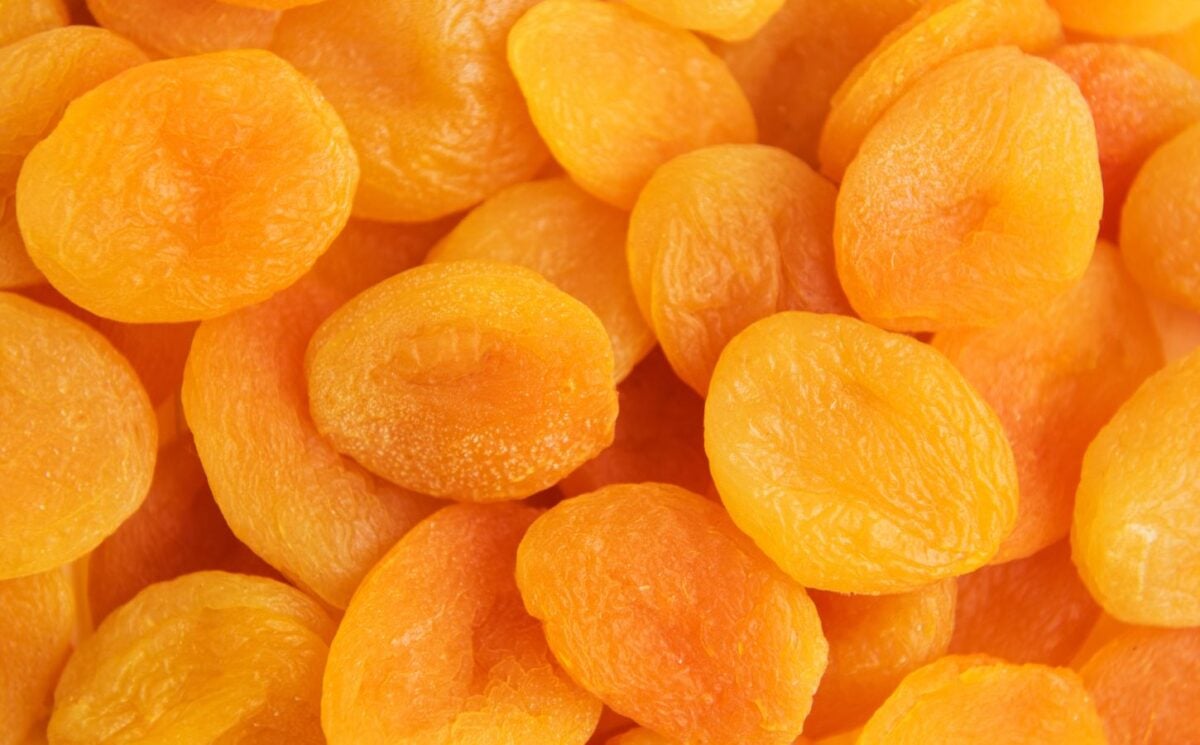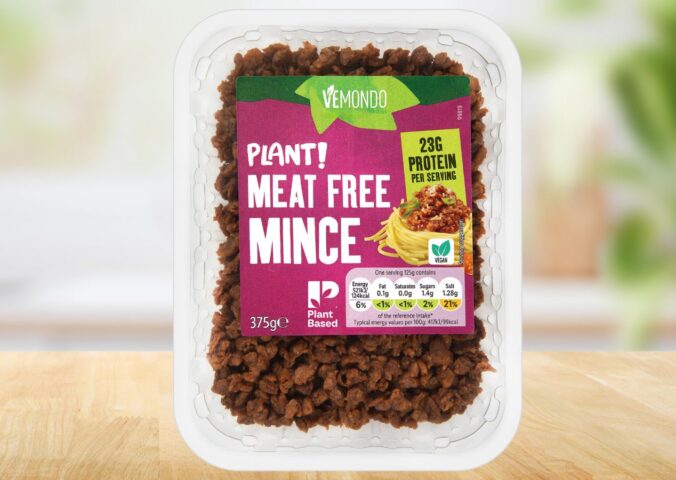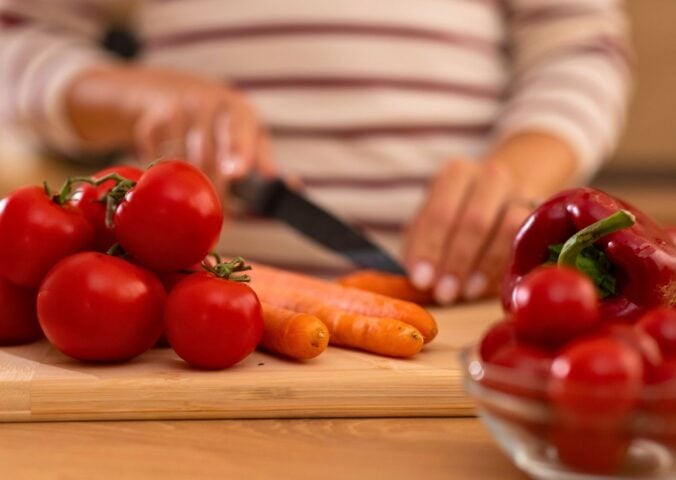Dried apricots are magical little fruits that can work wonders for your health and upgrade many recipes. They’re known for their chewy texture and concentrated sweetness, and have been a part of human diets for centuries.
Believed to have originated in Central Asia and China, apricots were traded along the Silk Road, spreading to the Middle East, Mediterranean, and beyond. Drying the fruit was an early preservation method that allowed it to be stored for long periods, making it a highly valuable food source for travelers and communities without year-round access to fresh produce.
Read more: What Is Spirulina? The Protein-Packed Plant You Should Get To Know
Today, dried apricots are enjoyed all over the world, with particular popularity in countries such as Turkey, Iran, Armenia, and Uzbekistan – regions that remain major producers. In Turkey’s Malatya province, often called the “apricot capital of the world,” the fruit is a key export commodity. In the Mediterranean, Middle East, and parts of South Asia, dried apricots feature prominently in traditional recipes, from stews to desserts, and are a common item in markets and shops catering to both locals and tourists.
What are dried apricots?
Dried apricots are fresh apricots that have been dehydrated to remove most of their natural water content while preserving their sweet, tangy flavor and much of their nutritional value.
This process can be done naturally by sun-drying or through commercial methods using dehydrators, sometimes with the addition of sulfur dioxide to help maintain their bright orange color. Unsulfured dried apricots, by contrast, tend to be darker in appearance with a richer, more caramelized taste. Depending on the method and variety, dried apricots can range from chewy and tart to soft and honey-like in flavor.
Dried apricots health benefits
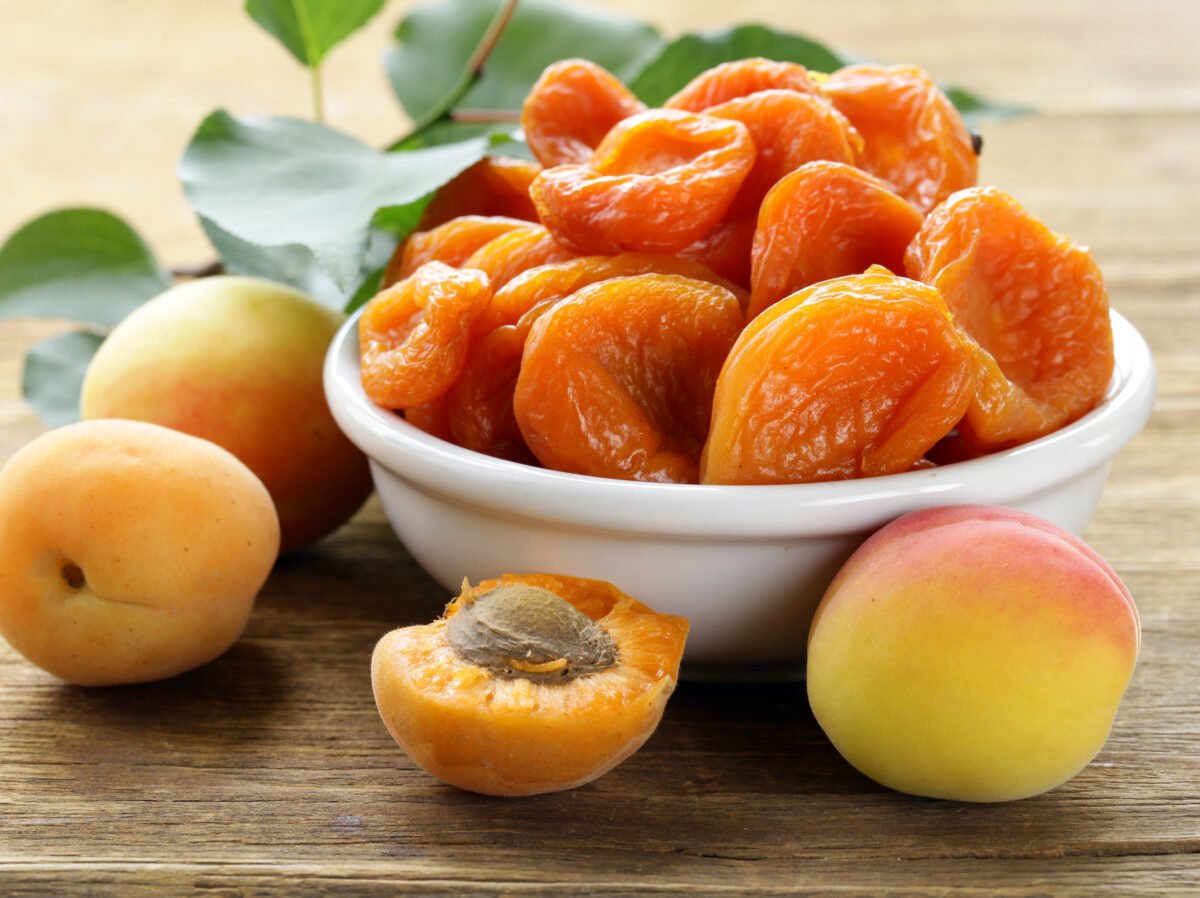
Dried apricots are valued for their health benefits, as well as their taste and versatility. They have many similar benefits to fresh apricots, but with a few key differences.
As the drying process removes most of their water content, their nutrients are more concentrated. A study published in 2021 found that consumption of dried fruits, including apricots, is associated with higher diet quality and increased intake of underconsumed nutrients. The study found, for example, that people who ate dried fruits had higher intakes of fiber. This is due to the fact that dried fruits have a far higher fiber content than their fresh counterparts.
“Dried apricots are a good source of fiber, a nutrient that is lacking in the Standard Western Diet – fewer than one in 10 UK adults meets the 30g RDA,” nutritionist and certified lifestyle medicine professional Rohini Bajekal tells Plant Based News. “Fiber can support optimal digestion, prevent constipation, and improve overall wellbeing.” Dried apricots contain around 7g of fiber per 100g serving. Incorporating any dried fruits – including apricots – into your diet, can help you meet your fiber requirements when combined with plenty of other plant foods.
Dried apricots also contain vitamins A, C, vitamin E, calcium, iron, phosphorus, and potassium, and beta-carotene. Beta-carotene is a plant pigment that gives them their bright orange color and acts as a powerful antioxidant. In the body, beta-carotene converts to vitamin A, which supports healthy vision, boosts immune function, and helps maintain skin health. Its antioxidant properties also protect cells from damage caused by free radicals, potentially lowering the risk of chronic diseases. Pairing dried apricots with a small amount of healthy fat, such as nuts, can enhance beta-carotene absorption for maximum benefit.
Read more: Should Vegans Supplement Creatine? What You Need To Know
Another notable benefit of dried apricots is the fact that they are a pretty good source of iron. Dried apricots contain around 2.66mg of iron per 100g, which is considerably more than their fresh fruit counterpart. Consuming vitamin C alongside iron helps the body to absorb the latter, so it’s generally best advised to always mix plant-based iron sources with another food high in the vitamin. Dried apricots contain less vitamin C than fresh, but still a solid amount at around 1mg per 100g, meaning they may assist with iron absorption. “I recommend my clients add a serving of dried apricots to iron-rich foods such as chickpea tagine or on their porridge,” says Bajekal.
How to use dried apricots
Dried apricots are one of the most versatile pantry staples you can keep on hand. Thanks to their low water content, they store far longer than fresh apricots – often for six months to a year when kept in a cool, dry place – making them an excellent option for travel or a quick snack.
You can chop them into porridge, yogurt, or salads for a pop of natural sweetness, blend them into smoothies for added fiber and nutrients, or use them in baking. In savory cooking, they really come into their own. Dried apricots pair beautifully with grains, pulses, and Middle Eastern-inspired dishes like tagines or pilafs. Their long shelf life means you can enjoy them year-round, even when fresh apricots are out of season.
Dried apricot recipes
Eating dried apricots straight out of the pack is great and all – but if you fancy being a little bit more adventurous, there are loads of recipes you can try them out in. From tagine to energy bars, here are just a few recipes that showcase dried apricots in all their glory.
Moroccan inspired tagine

This delicious and family-friendly tagine recipe has all the makings of a dinnertime staple. It’s jam-packed full of wholesome fruits and vegetables, meaning it’s a great option for those looking to maximize their plant points. Sweet potatoes, chickpeas, zucchini, and bell peppers are all complemented by spices like cumin, cinnamon, smoked paprika, and turmeric. Dried apricots are essential to this recipe, as they give it a touch of sweetness that’ll have you coming back to this recipe again and again. This recipe comes from The Plant-Based Family Cookbook by Claire Swift and Sarah Biagetti.
Find the recipe here.
Nutty rice salad
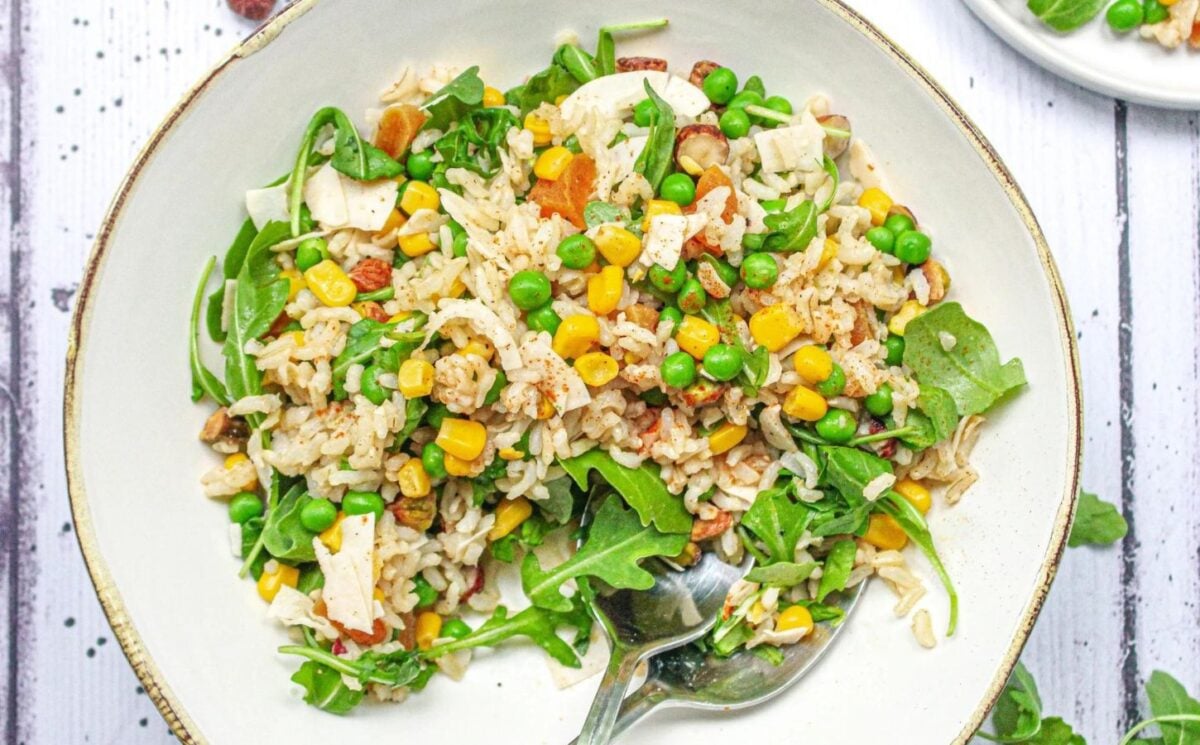
Rice salads are a seriously underrated lunch dish – and adding in a sweet ingredient like dried apricots takes them to the next level. Apricots work alongside brown rice (which is very rich in fiber), peas, sweetcorn, pistachios, and hazelnuts to create a wholesome meal that’s excellent for digestive health. A homemade dressing made from apple cider vinegar, olive oil, lime juice, syrup, and cayenne pepper takes this rice salad to a whole new level. This recipe comes from Nourishing Amy.
Find the recipe here.
Raw vegan apricot and ginger energy bars
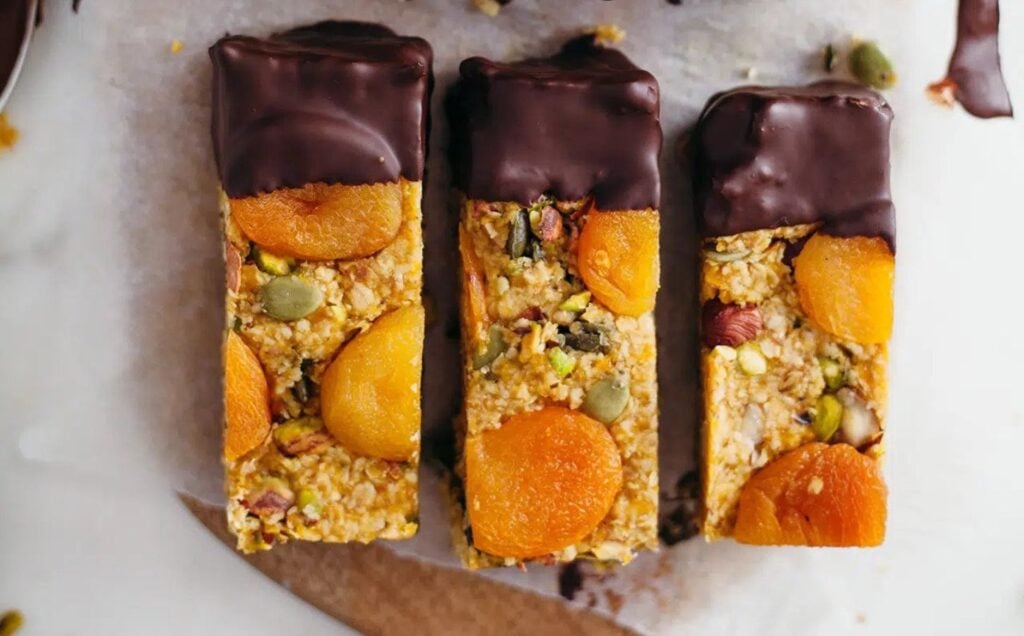
If you can’t get enough of snacking on dried apricots, this recipe is for you. These raw, no-bake energy bars couldn’t be easier to make – all you need to do is put the ingredients in a food processor, add some nuts and seeds, compact it all together, then leave the mixture in the fridge to set for a few hours. Dried apricots are the stars of these energy bars, complemented by wholesome ingredients like pistachios, oats, and pumpkin seeds. Dark chocolate, maple syrup, and ginger all work together to give these bars extra flavor. This recipe is from So Vegan.
Find the recipe here.
